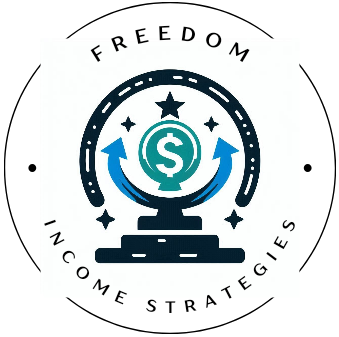For retirees, one of the primary concerns is creating a steady, reliable income stream without having to dip into savings too quickly. Dividend investing can offer a solution by providing regular income through payouts from established companies. This strategy allows retirees to maintain financial security while preserving their principal investment. In this guide, we’ll explore why dividend investing is ideal for retirees and how to build a portfolio that can meet long-term income needs.
Why Dividend Investing Suits Retirees
As retirees shift from the accumulation phase to the distribution phase of their financial life, the focus often turns to generating sustainable income. Dividend investing offers a number of advantages for those no longer earning a regular paycheck.
Key Benefits:
- Regular Income: Dividend-paying stocks provide a steady stream of income, which can be especially useful for covering living expenses.
- Preservation of Capital: Dividend investors can rely on the income from dividends, rather than selling off assets, to fund their retirement.
- Inflation Protection: Companies that consistently raise their dividends offer some protection against inflation, as the growing dividend payouts help maintain purchasing power over time.
Types of Dividend Stocks for Retirees
Not all dividend stocks are equally suited for retirees. Some stocks might offer high yields but come with higher risk, while others provide modest but more reliable dividends. Here are the types of dividend stocks that tend to work well for retirees:
Blue-Chip Stocks
Blue-chip companies are large, well-established firms with a long history of financial stability. They often pay consistent dividends and are considered safer investments. Examples include companies in sectors like utilities, consumer staples, and healthcare, which tend to be less volatile even in uncertain economic conditions.
Dividend Aristocrats
Dividend aristocrats are companies that have increased their dividend payouts for at least 25 consecutive years. These companies are often industry leaders with strong cash flow, making them reliable choices for retirees who want to secure steady income. Examples include well-known brands like Procter & Gamble, Johnson & Johnson, and Coca-Cola.
Real Estate Investment Trusts (REITs)
REITs are companies that own or finance income-producing real estate. They are required by law to distribute at least 90% of their taxable income to shareholders, making them excellent sources of high dividend yields. REITs can provide diversification within a retiree’s portfolio while also delivering substantial income.
Balancing Yield and Risk
While high dividend yields can be tempting, retirees need to be cautious. A very high yield can sometimes signal that a company is under financial stress, which could lead to a dividend cut. It’s important to strike a balance between yield and risk by focusing on companies with sustainable payout ratios (typically under 70%) and strong financial health.
Payout Ratio
The payout ratio is the percentage of a company’s earnings paid out as dividends. A high payout ratio may indicate that a company is paying out most of its earnings, leaving little room for reinvestment or dividend growth. Retirees should seek companies with moderate payout ratios to ensure dividends are sustainable even in tough economic times.
Dividend Growth
Companies that consistently grow their dividends can help retirees keep up with inflation. While yield is important, dividend growth should also be a key consideration. Stocks with a history of dividend increases are likely to continue paying dividends through various economic cycles.
Creating a Diversified Dividend Portfolio

A well-diversified dividend portfolio can reduce risk while providing a steady income stream. Diversification means spreading investments across various sectors to ensure that one industry downturn doesn’t drastically impact your overall income.
Sectors to Consider
- Utilities: Utility companies are known for their stable, predictable cash flows, making them reliable dividend payers.
- Consumer Staples: Companies that produce essential goods, such as food and household products, often maintain strong performance even during economic downturns.
- Healthcare: As people age, healthcare needs rise, making this sector an essential part of any dividend portfolio.
Avoid Overconcentration
While it’s important to invest in industries with stable dividends, avoid putting all your investments in one or two sectors. Overconcentration increases the risk if one sector faces unexpected challenges. Instead, aim to have a diverse portfolio that includes various industries and dividend types (e.g., stocks, REITs).
Managing Tax Efficiency
Taxes are another critical consideration for retirees. While qualified dividends are taxed at lower rates, non-qualified dividends and income from REITs may be taxed at ordinary income rates. Retirees should consider holding dividend-paying stocks in tax-advantaged accounts like IRAs or Roth IRAs to minimize the tax impact.
Tax-Advantaged Accounts
By holding dividend-paying stocks in tax-advantaged accounts, retirees can defer taxes on dividends or even avoid them altogether if the investments are held in a Roth IRA. This allows retirees to maximize their income while minimizing their tax liability.
Monitoring and Rebalancing Your Portfolio
Even after building a solid dividend portfolio, retirees need to regularly monitor and rebalance their investments. Over time, market conditions may change, leading to fluctuations in portfolio value and dividend payouts.
Monitoring for Dividend Cuts
Retirees should keep an eye on companies that may be at risk of cutting their dividends. If a company is struggling financially, it may reduce or eliminate its dividend to preserve cash. Staying informed about company earnings and payout ratios can help retirees avoid stocks that may jeopardize their income stream.
Rebalancing for Income Needs
As retirees age, their income needs may shift. Rebalancing the portfolio to adjust for these changes can help ensure that the dividend income continues to meet their needs. For example, moving towards more conservative, higher-yielding stocks might become a priority as retirees seek to maximize income with minimal risk.
Conclusion: A Path to Financial Stability in Retirement
Dividend investing offers retirees a reliable source of income while preserving capital for future generations. By focusing on high-quality dividend-paying stocks, maintaining diversification, and staying mindful of tax implications, retirees can create a sustainable income stream that supports their financial security throughout retirement.
With careful planning and regular portfolio adjustments, dividend investing can provide the peace of mind retirees need to enjoy their golden years without constantly worrying about their financial future.

